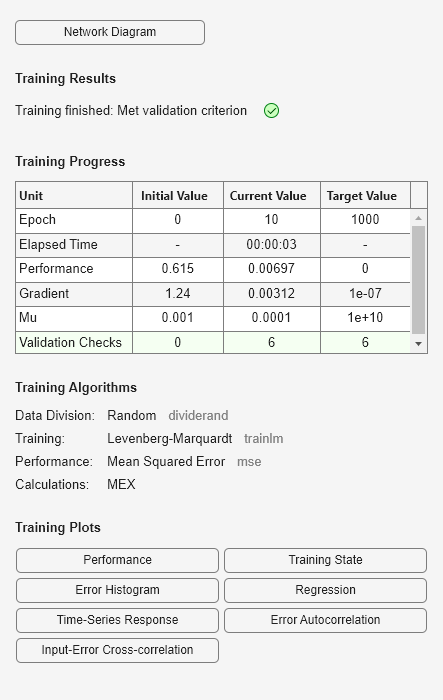narxnet
具有外部输入的非线性自回归神经网络
说明
narxnet( 接受以下参量:inputDelays,feedbackDelays,hiddenSizes,feedbackMode,trainFcn)
由从 0 或正值开始递增的输入延迟组成的行向量,
inputDelays由从 0 或正值开始递增的反馈延迟组成的行向量,
feedbackDelays由一个或多个隐藏层大小组成的行向量,
hiddenSizes反馈的类型,
feedbackMode反向传播训练函数,
trainFcn
并返回一个 NARX 神经网络。
NARX(具有外部输入的非线性自回归)网络可以学习预测一个时间序列,前提是给定该时间序列的过去值、反馈输入和另一个称为外部(或外因)时间序列的时间序列。
示例
输入参数
版本历史记录
在 R2010b 中推出
另请参阅
closeloop | narnet | openloop | preparets | removedelay | timedelaynet | network | train


